
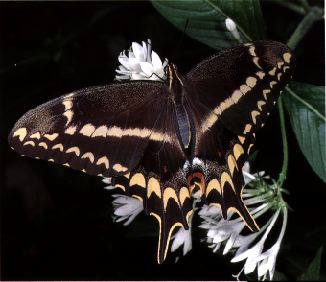
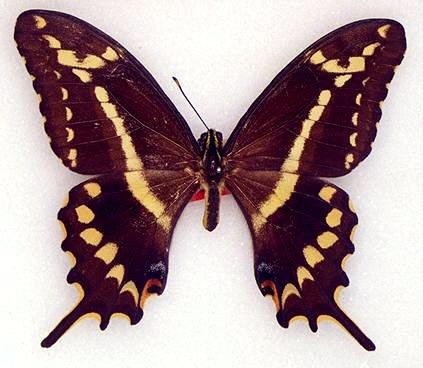
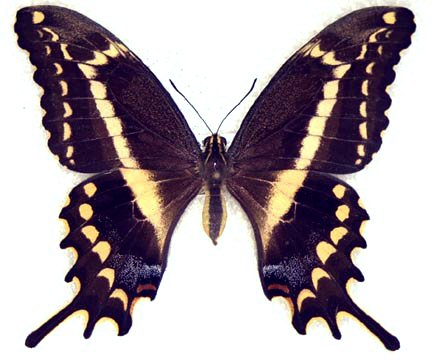
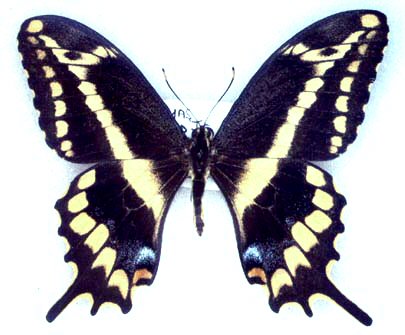
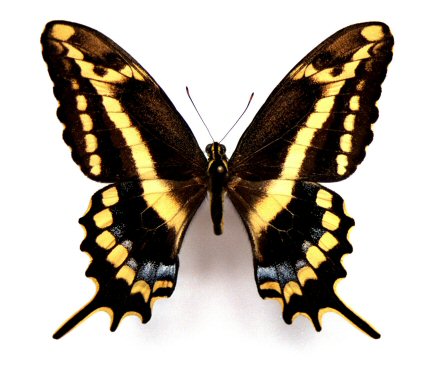
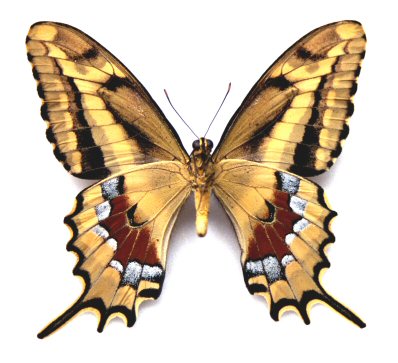
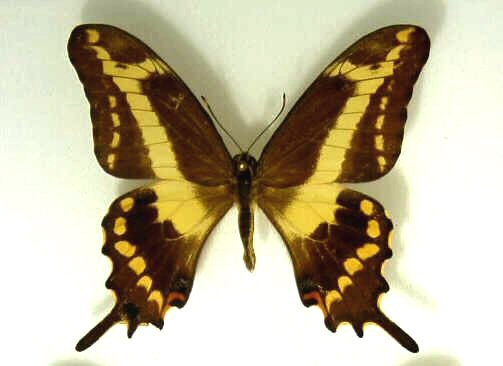
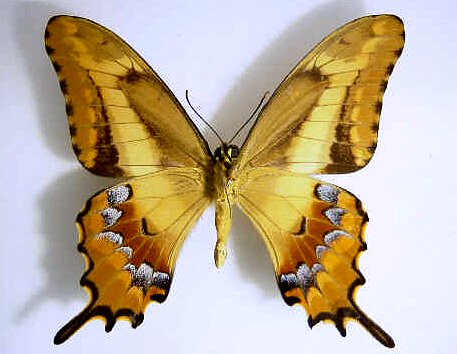
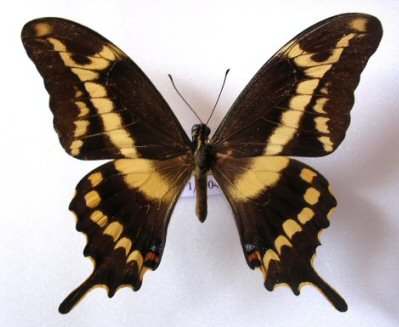
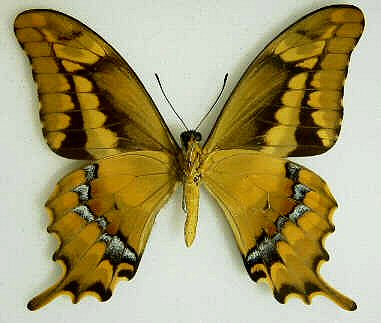
Aristodemus is widespread in the Caribbean
occurring on Cuba, the Bahamas, Hispaniola, and W. Puerto Rico. It is at
home in dense hardwood hammocks and scrub lands, flying slowly and
easily through seemingly impenetrable growth. When it ventures into the
open it has a rapid and erratic flight. Males can be quite terratorial
when defending a favorite sunbeam in the woods awaiting a passing female;
they also engage in patrolling behavior, repeatedly flying the same circuit
in search of a mate. Males appear to emerge before females. (Pers. observations).
Populations are usually coastal and typically emerge from April to June
in the northern islands after spring rains. In the southern Bahamas,
Cuba , and the Dominican Republic there is a second brood following the
September rains, and the spring brood emerges a bit later than the well
known Florida population, ssp ponceanus. Ssp
ponceanus is protected by the US endangered species act and is listed
as CITES appendix I. Populations of ponceanus were close to extinction
at several times this century (due to hurricanes and loss of suitable habitat),
but the species as a whole, is in no danger of extinction.
The NW Bahamian population has been named as ssp
driophilus, but this is not universally accepted.
Ssp temenes is found throughout coastal areas
in Cuba and possibly Little Cayman Island; The nominate
race flies in the Dominican Republic and western Puerto Ricop. Ssp.
majasi , the most restricted of the ssp, is
known only from Crooked Island in the Bahamas. Ssp. bjorndalae,
from SE Bahamas and Turks and Caicos Islands, is highly variable in the
extent of red and blue on the hindwing. Bjorndalae
was once thought to be rare, but is actually locally and seasonally abundant
and in no immediate danger as many of its habitats are already protected
lands. There is some thought that
bjorndalae may deserve full species
ranking. In Cuba and the Dominican Republic it is locally common to abundant,
though exceedingly seasonal and often unpredictable in its emergence.
There is wide fluctuation in population density from year to year, and
certain island populations (particularly Florida keys and the
Bahamas) may be destroyed by hurricanes from time to time and repopulated
by strays. The species may be able to undergo a long diapause and remain
as a pupa through prolonged dry spells (even > 1 year!), emerging after
heavy rains when it is more likely to find a fresh host plant. This "desert"
adaptation may also help it survive the occasional hurricane as a protected
pupa rather than a vulnerable larva or adult .